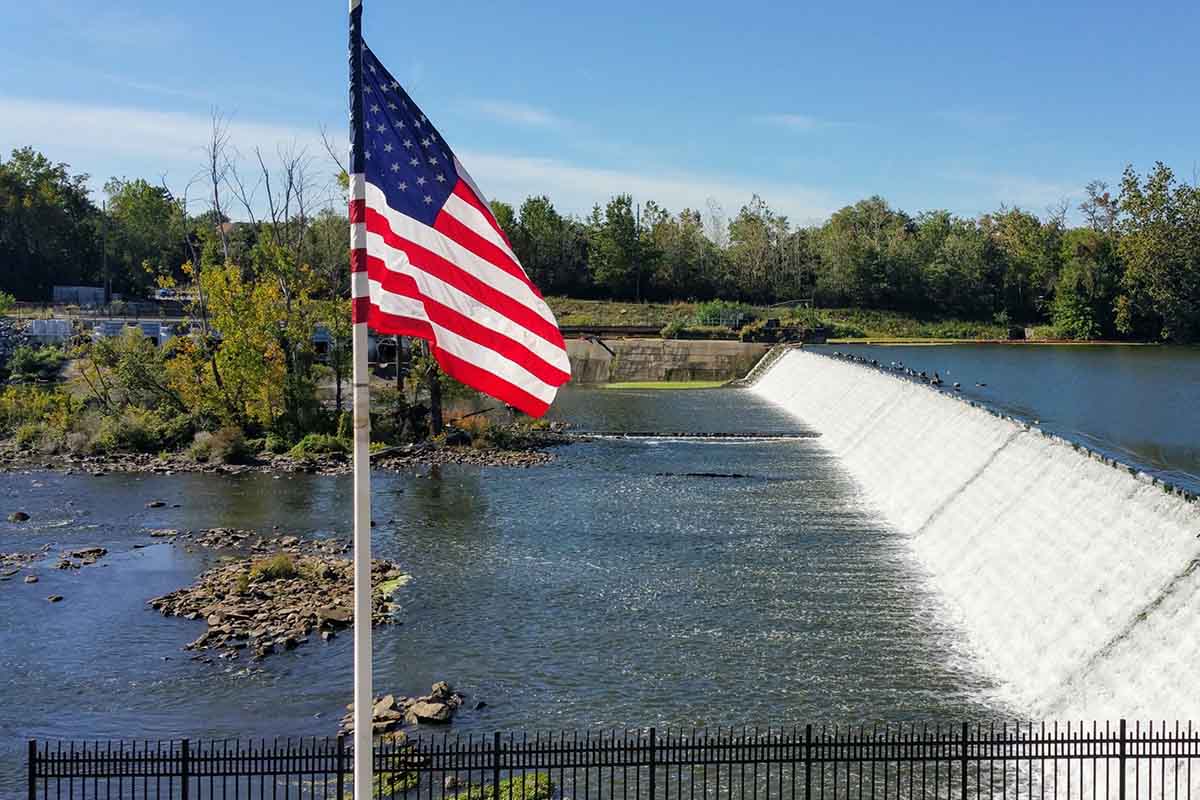Three Companies Sued for Contaminating US Drinking Water
KEY POINTS
- Corporate Responsibility and Legal Accountability: The cases against DuPont, ExxonMobil, and Monsanto highlight the importance of corporate responsibility in managing environmental hazards. DuPont’s settlement over PFAS contamination and ExxonMobil’s MTBE pollution case underscores the legal and financial consequences companies can face when they neglect environmental standards, emphasizing the need for stringent regulatory compliance and proactive environmental stewardship.
- Environmental and Public Health Impacts: The contamination of drinking water by PFAS, MTBE, and PCBs illustrates the significant risks these chemicals pose to public health and the environment. The persistence of such compounds in water sources and their potential to cause serious health issues, such as cancer and thyroid disease, underline the critical need for vigilant monitoring of industrial practices and the removal of harmful substances from consumer and industrial products.
- Community and Regulatory Response: The legal actions taken by affected communities and regulatory bodies against these corporations demonstrate the power of collective action and the legal system in addressing environmental injustices. The substantial settlements and the ongoing legal battles not only provide a measure of compensation to the victims but also serve as a deterrent to prevent future negligence. These cases reinforce the necessity for robust environmental regulations and vigilant enforcement to protect vital water resources and public health.
Clean drinking water is a basic human right, yet in the United States, there have been instances where this right has been compromised.
Several companies have faced legal actions in recent years for contaminating drinking water sources, endangering public health, and violating environmental regulations.
According to The Guardian, the water supply of up to 26 million Americans is tainted, with many cases potentially attributed to corporate actions.
These cases both emphasize the significance of corporate responsibility and underscore the critical need for robust regulations to safeguard our most vital resources.
Here, we delve into three notable cases where companies have been sued for polluting US drinking water.
DuPont and PFAS Contamination
One of the most infamous cases of water contamination involves DuPont and the group of chemicals known as per- and polyfluoroalkyl substances (PFAS).
PFAS are synthetic chemicals used in a wide array of consumer products due to their water and grease-resistant properties.
However, these chemicals are highly persistent in the environment and have been linked to various adverse health effects.
In 2023, Springer Nature revealed a concerning EPA study.
According to the study, a staggering 70 to 94 million individuals in the United States are exposed to elevated levels of six specific PFAS compounds.
This exposure occurs exclusively through their drinking water.
This alarming revelation underscores the urgent need for stricter regulations and heightened awareness surrounding the risks posed by PFAS contamination.
In the early 2000s, it was revealed that DuPont had been releasing PFAS, specifically perfluorooctanoic acid (PFOA), from its manufacturing facilities. This contamination affected local drinking water supplies in Parkersburg, West Virginia.
Residents filed a class-action lawsuit against DuPont, alleging that exposure to PFOA had caused serious health issues, including cancer, thyroid disease, and birth defects.
According to Delaware Business Times, the legal battle culminated in a landmark settlement in 2017. DuPont, along with its spin-off entity Chemours, reached a settlement totaling $670.7 million to resolve numerous lawsuits associated with PFAS contamination.
This case shed light on the widespread presence of PFAS in water sources across the country and spurred increased scrutiny and regulations.
However, in recent times, DuPont found itself entangled in the firefighter foam lawsuit, along with several other companies including 3M.
This lawsuit involves allegations of environmental contamination and health risks associated with the use of firefighting foam containing per- and polyfluoroalkyl substances (PFAS).
These chemicals, found in the foam, are suspected of causing adverse health effects and contaminating water sources. Studies note that many military and firefighter personnel have faced a heightened risk of cancer due to the exposure.
This has prompted legal action seeking accountability and compensation for affected communities and individuals. TorHoerman Law reports that DuPont and 3M, among others, have reached a settlement exceeding $1 billion.
This settlement resolves litigation with local governments and utilities nationwide affected by PFAS contamination in their water supplies.
ExxonMobil and MTBE Pollution
Methyl tertiary-butyl ether (MTBE) is a gasoline additive that reduces air pollution.
However, its solubility in water makes it highly mobile in the environment, posing a significant risk of groundwater contamination.
ExxonMobil, one of the world’s largest oil and gas companies, faced litigation over MTBE pollution in several states, including New York and California.
In New York, ExxonMobil was sued for contaminating groundwater with MTBE from its gasoline storage terminals.
The state alleged that ExxonMobil had known about the risks associated with MTBE but continued to use it without adequate safeguards.
The lawsuit resulted in a $105 million settlement in 2009 to fund cleanup efforts and provide clean drinking water to affected communities.
Similarly, in California, ExxonMobil and other oil companies faced lawsuits over MTBE contamination.
These lawsuits resulted in multi-million dollar settlements aimed at addressing the environmental and public health impacts caused by MTBE contamination.
Monsanto (Bayer) and PCB Contamination
Polychlorinated biphenyls (PCBs) are toxic chemicals that were once widely used in electrical equipment, hydraulic fluids, and other industrial applications.
Despite being banned in the late 1970s due to their harmful effects on human health and the environment, PCBs persist in the environment. They pose long-term risks to water sources.
Monsanto, now owned by Bayer AG, was a major producer of PCBs for decades.
Numerous communities across the US have filed lawsuits against Monsanto and other companies for PCB contamination of waterways and soil.
In a significant case, a jury in Washington State recently decided that Monsanto is liable to pay $857 million.
According to The New York Times, the plaintiffs claimed they were exposed to dangerous chemicals at a school, leading to illnesses.
The jury ordered Monsanto to pay $73 million in compensatory damages to five students and two parents from Sky Valley Education Center in Monroe, WA. Additionally, they mandated $784 million in punitive damages against Monsanto.
FAQs
What are the concerns surrounding firefighting foam?
The issue with firefighting foam lies in its use of PFAS, which has been linked to environmental contamination and adverse health effects.
These chemicals, known as “forever chemicals,” are highly persistent in the environment and can contaminate water sources, posing risks to human health and ecosystems.
How can firefighting foam harm individuals?
Firefighting foam can harm individuals through chemical exposure, skin irritation, respiratory issues, fire re-ignition, and slippery surfaces.
Exposure to hazardous chemicals like per- and polyfluoroalkyl substances (PFAS) can lead to long-term health problems. Direct contact or inhalation of foam can cause immediate discomfort and breathing difficulties.
As a result, many individuals have filed AFFF lawsuits against manufacturers, seeking compensation for the health risks associated with exposure to these toxic chemicals.
Who manufactures PFAS?
PFAS (per- and polyfluoroalkyl substances) are manufactured by various companies, including DuPont, 3M, Chemours, and other chemical manufacturers.
These companies produce PFAS for use in various consumer and industrial products, including firefighting foam, non-stick cookware, and waterproof clothing.
In conclusion, the cases involving DuPont, ExxonMobil, and Monsanto/Bayer vividly demonstrate the environmental and public health risks stemming from corporate negligence.
Despite regulatory frameworks, profit often precedes environmental stewardship, resulting in widespread pollution and community harm.
These legal battles stress the necessity of robust enforcement of environmental regulations and the importance of corporate accountability.
They also showcase the resilience of affected communities in seeking justice.
Regulators and companies must prioritize water resource protection and undertake proactive pollution prevention measures.
Collective efforts are crucial to ensure access to clean and safe drinking water for generations.





















